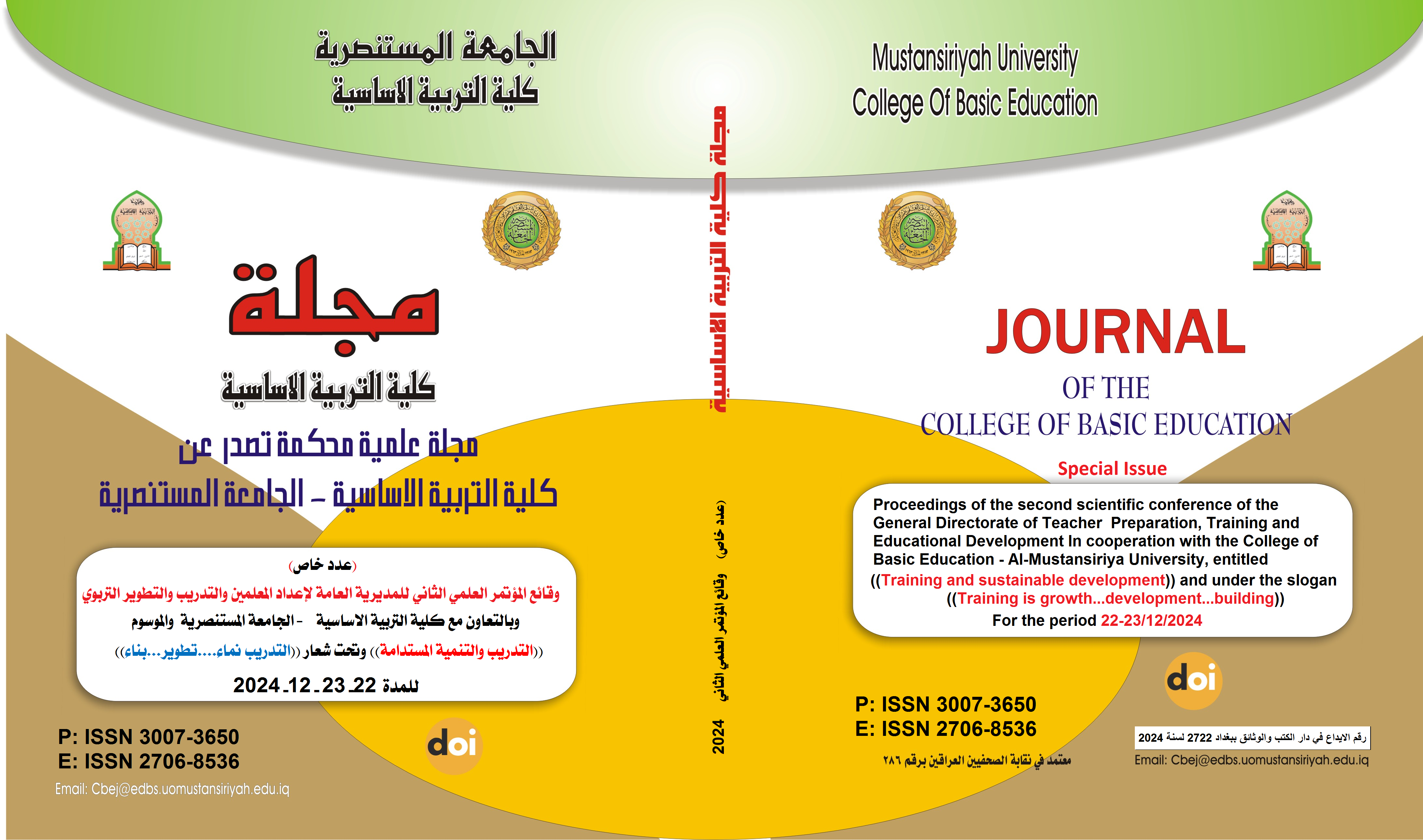Abstract
This study aimed to evaluate the application level of educational service quality at the College of Business and Economics at the University of Mosul, including the quality of faculty members, scientific research quality, educational management, and educational curricula. A case study methodology was used, with a checklist distributed to a sample of 10 faculty members in the college to collect data, and the results were analyzed using the weighted mean and percentages. The results showed that the college applies some dimensions effectively, such as the quality of faculty members and educational curricula, with application rates of (84%) and (80%), respectively. However, the results revealed gaps in the application of other dimensions, such as the quality of scientific research (68%) and educational management (72%). Based on these results, several recommendations were made to improve the educational process at the college. These included enhancing academic support for students, increasing financial support for scientific research, improving faculty recruitment, and developing curricula to meet labor market needs. The importance of achieving a balance between the various dimensions of educational service quality was also emphasized to ensure comprehensive improvement in academic performance. This study contributes to highlighting the strengths and weaknesses in applying educational service quality at the college, offering opportunities to improve and strengthen educational and research strategies in the future.
Keywords
Application of educational service quality
College of Administration and Economics.
educational administration in universities
effectiveness of scientific research
faculty performance
improvement of educational curricula
Abstract
هدفت هذه الدراسة إلى تقييم مستوى تطبيق أبعاد جودة الخدمة التعليمية (ESQ) في كلية الإدارة والاقتصاد بجامعة الموصل، والتي تشمل جودة أعضاء هيئة التدريس (FQ)، جودة البحث العلمي (QSR)، جودة الإدارة التعليمية (QEA)، وجودة المناهج التعليمية (QEC). تم استخدام منهجية دراسة الحالة من خلال توزيع قائمة فحص على عينة ضمن (10) من أعضاء هيئة التدريس في الكلية لجمع البيانات، وتحليل النتائج باستخدام المتوسط الحسابي والنسب المئوية. أظهرت النتائج أن الكلية تطبق بعض الأبعاد بشكل جيد، مثل (FQ) و(QEC)، بنسبة تطبيق بلغت (84%) و (80%) على التوالي. ومع ذلك، أظهرت النتائج وجود فجوات في تطبيق أبعاد أخرى مثل (QSR) (68%) و(QEA) (72%). استنادًا إلى هذه النتائج، تم تقديم عدد من التوصيات لتحسين العملية التعليمية في الكلية. أبرز هذه التوصيات شملت تعزيز الدعم الأكاديمي للطلاب، زيادة الدعم المالي للبحث العلمي، تحسين استقطاب الأساتذة، وتطوير المناهج لتلبية احتياجات سوق العمل. كما تم التأكيد على ضرورة تحقيق توازن بين الأبعاد المختلفة لـ (ESQ) لضمان تحسين شامل في الأداء الأكاديمي. تسهم هذه الدراسة في تسليط الضوء على نقاط القوة والضعف في تطبيق (ESQ) في الكلية، مما يتيح فرصة لتحسين وتعزيز استراتيجيات التعليم والبحث العلمي في المستقبل.
Keywords
: تطبيق جودة الخدمة التعليمية، أداء أعضاء هيئة التدريس، فاعلية البحث العلمي، تحسين المناهج التعليمية، الإدارة التعليمية في الجامعات، كلية الإدارة والاقتصاد.
